All products featured are independently chosen by us. However, SoundGuys may receive a commission on orders placed through its retail links. See our ethics statement.
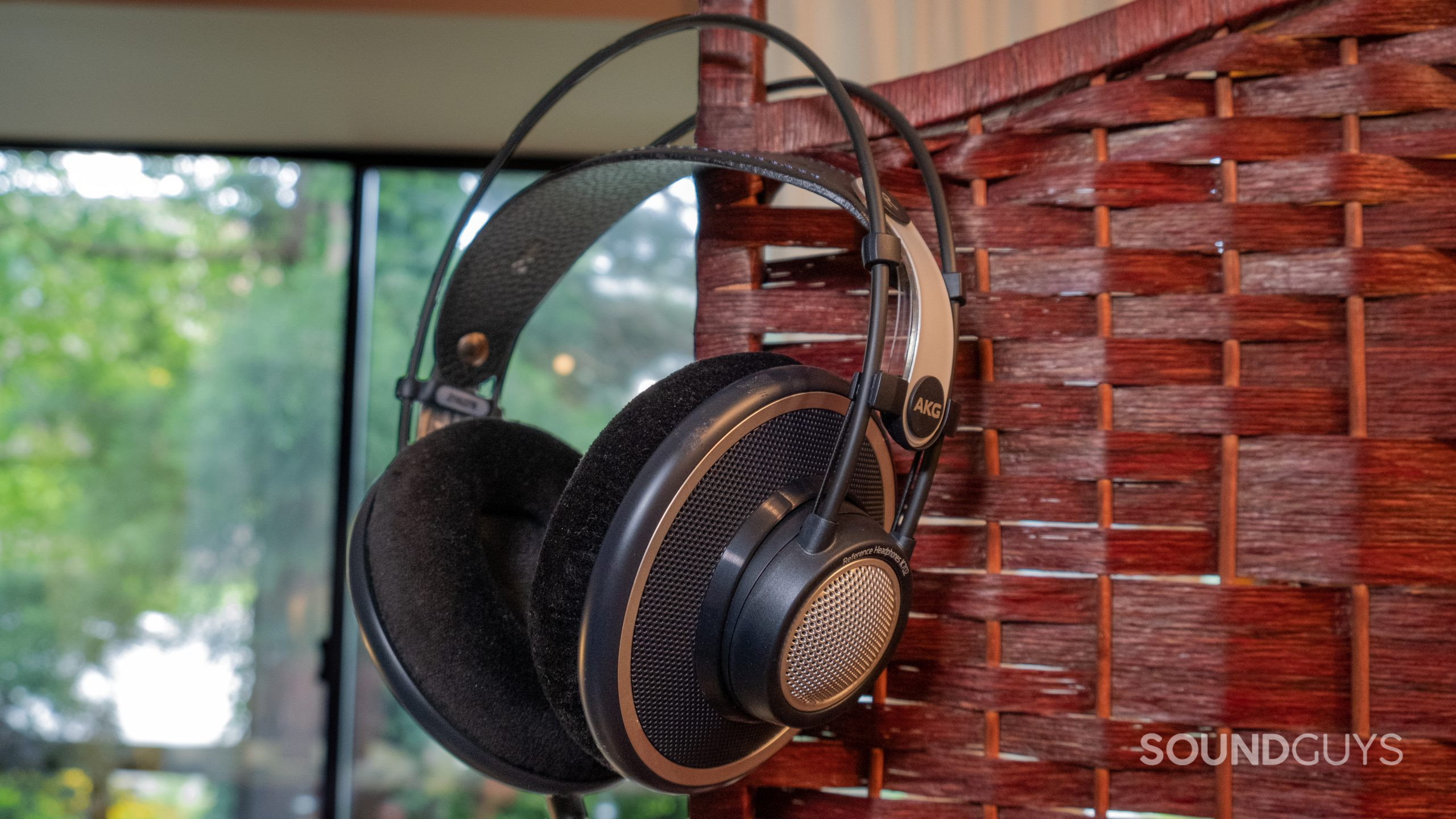
AKG K702 review
June 17, 2022
AKG K702
The AKG K headphones lineup includes an impressive array of models including the storied the bedroom producer favorite K240 Studio. Today’s entry, the AKG K702, rates as a worthy middle child in the K series. The basic facts of the K702 are that it’s a large, lightweight, open-back headset engineered with analytical listening in mind. After two weeks of testing, we can say it’s a nice piece of gear in the right circumstance. Let’s see where it shines.
- Audio producers and engineers will like the AKG K702 breathable, comfortable fit for long sessions.
- Critical listeners can enjoy the “neutral” studio-style sound of the K702.
What’s it like to use the AKG K702?
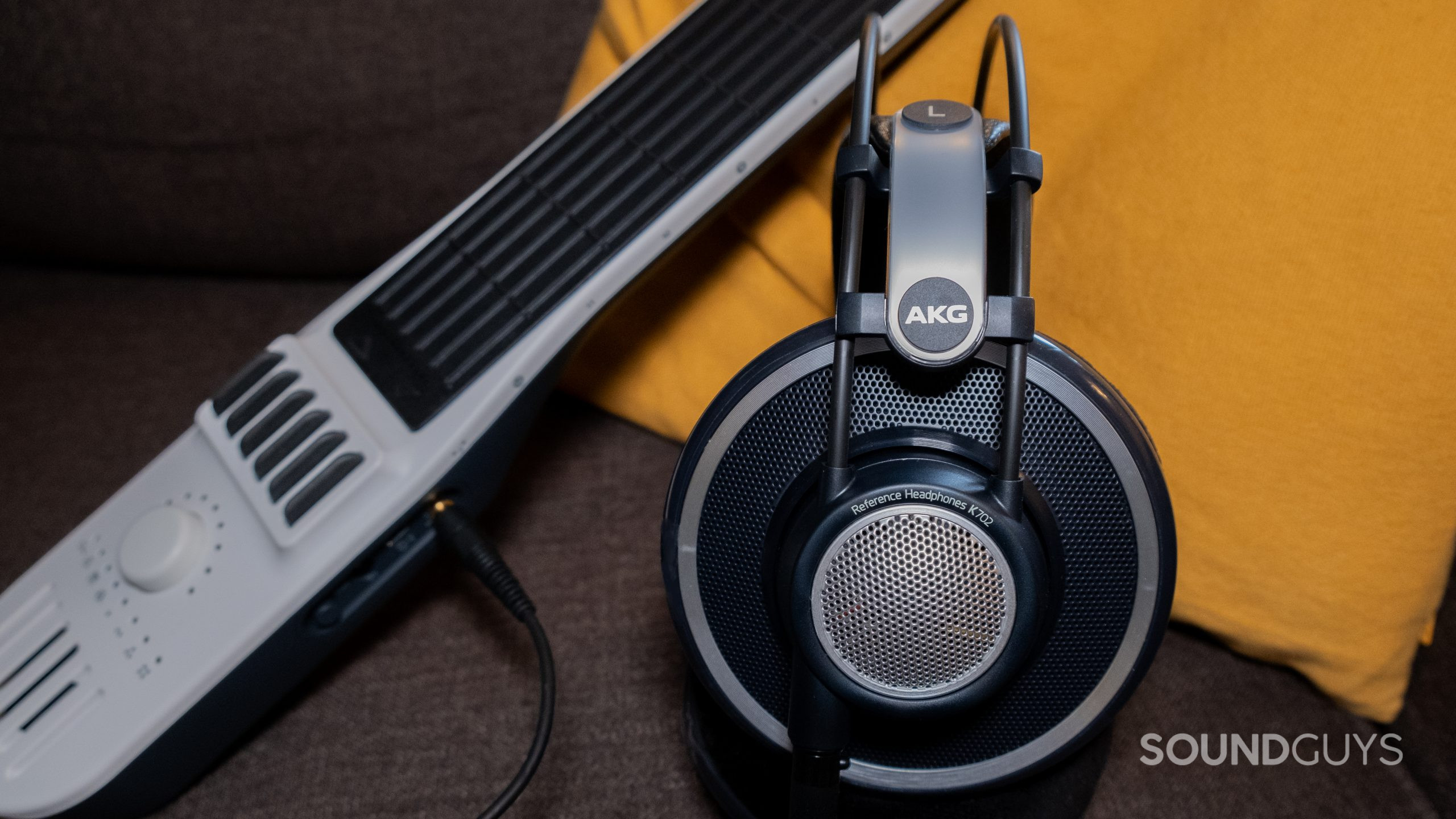
Despite its large box, the AKG K702 package includes just the cans, removable cable, and 1/4-inch adapter. Selling at a premium, the K702 boasts 45mm dynamic drivers using a patented Varimotion two-layer diaphragm, which also uses flat wire voice coils. AKG classifies the K702 as ideal for critical listening, hence the term “Reference Studio Headphones” on the box, but the K702 works perfectly fine for quiet at-home listening too—if your home is quiet enough.
Simply put, Variomotion is a type of dynamic driver (something most headphones use). AKG uses two flat wires, rather than a single round wire for the voice coils, which can offer a few benefits like reducing inductance. This provides a more uniform load for the amplifier across the frequency range, resulting in improved high-frequency performance, as well as reduced distortion. It’s essentially just small refinements to the classic dynamic driver design.
The circular ear cups feel quite large on my head, and when I remove the headphones, it’s hard to keep them around my neck because they’re so big. Fortunately, the headset’s light weight (253g) and light clamping force keep it comfortable. Listeners can even make limited horizontal and vertical adjustments to the cups for a more custom fit.
A good fit is important on open-back headphones because it prevents the pressure waves from the front and back of the driver from canceling each other out, particularly at low frequencies. Velour padding makes it easy to achieve a proper fit, because it creates a better seal between your skull and the headphones than cheap synthetic leather. It just so happens that velour is also a great option for folks who wear glasses, but this specific material is scratchier than I expected. For the price, AKG could ship a second set of pads composed of another material but instead, you’ll need to search for aftermarket upgraded ear pads. Keep in mind that swapping these can affect the sound due to the variable acoustic qualities of different materials.
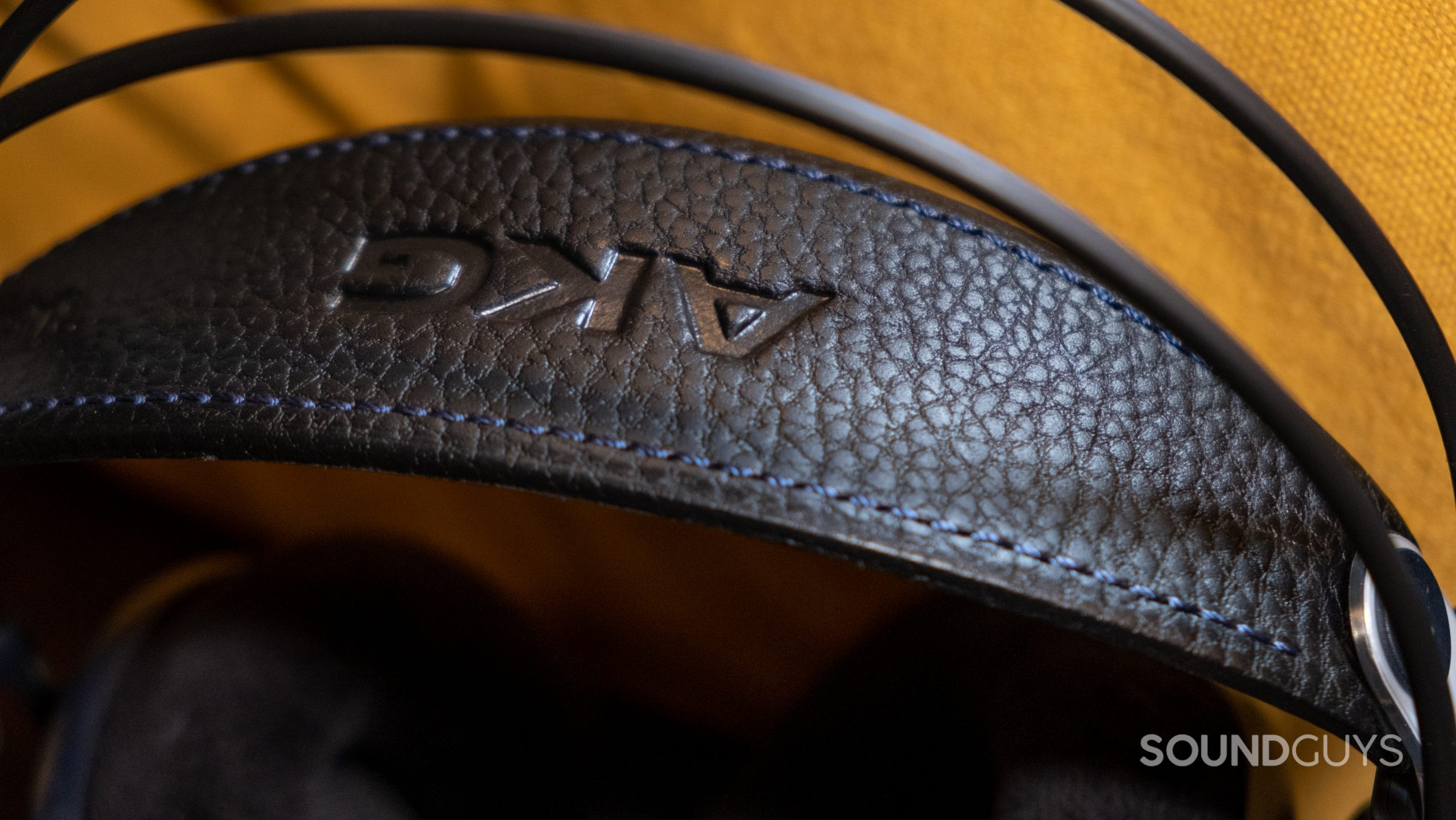
Despite the box calling it “soft,” the leather headband isn’t. In time the leather will hopefully break in. It seems like an odd choice of material, given that it doesn’t feel nice and is likely worse for shaved or bald heads. Leather also wards off potential vegan consumers from buying the K702. Frankly, a middling quality vinyl would fare better, but that doesn’t read as premium as the phrase, “soft leather headband.” The band is connected to two sets of twin fabric-wrapped elastics (these feel like hair ties) to offer a micro-adjustable tension fit. These work well, but over time they’ll need replacing, especially if you’ve got a large noggin stretching them out.
The open-back nature of the K702 means it’s best used at your mixing board, or at your computer with your favorite digital audio workstation (DAW). The open silver and black grilles on the exterior housing mean AKG has not designed the K702 for its sound-isolating properties—neither blocking the environment from your ears, nor your sound from leaking into your surroundings. However, the open-back ear cups offer good temperature and air ventilation.
Each AKG K702 is inspected and tested before shipping out to ensure it meets the tolerances AKG has for performance. That alone should lend some assurances about the K702 quality, alongside the warranty. Finally, the removable cable reduces one more common point of failure, extending the life of your headphones.
These days Samsung owns AKG (and Harman International), and there’s some fluidity between the entities—some Samsung earbuds benefit from AKG tuning. Given the Samsung backing, there’s no reason to suspect that quality is poor. The slight build of the K702 definitely demands some care without any durability qualifiers like an IP rating (although this is typical for studio headphones). However, our test unit performs without a hitch, but I would still recommend treating it nicely. You should not chuck it in your bag the way you can with a V-MODA Crossfade 2 Wireless Codex Edition.
Does the AKG K702 need a headphone amp?
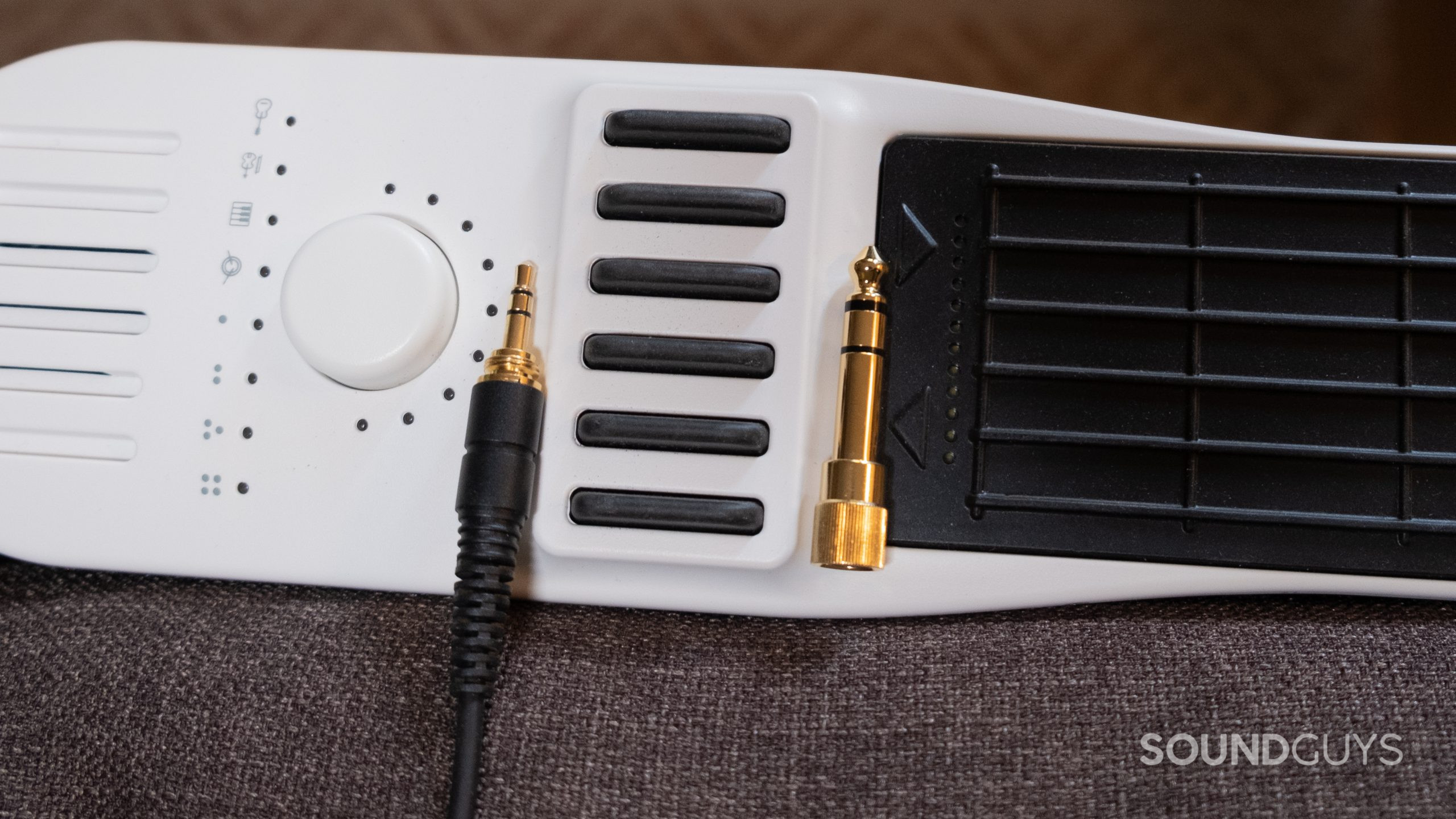
Included with the AKG K702 is a removable mini-XLR cable (3m) terminating in a 3.5mm jack. Both my audio interface and USB-C to 3.5mm dongle handle the headset well, but the rule of thumb goes if you need to crank the volume above what’s normal in your experience, you probably need an amp.
How well does the AKG K702 block noise?
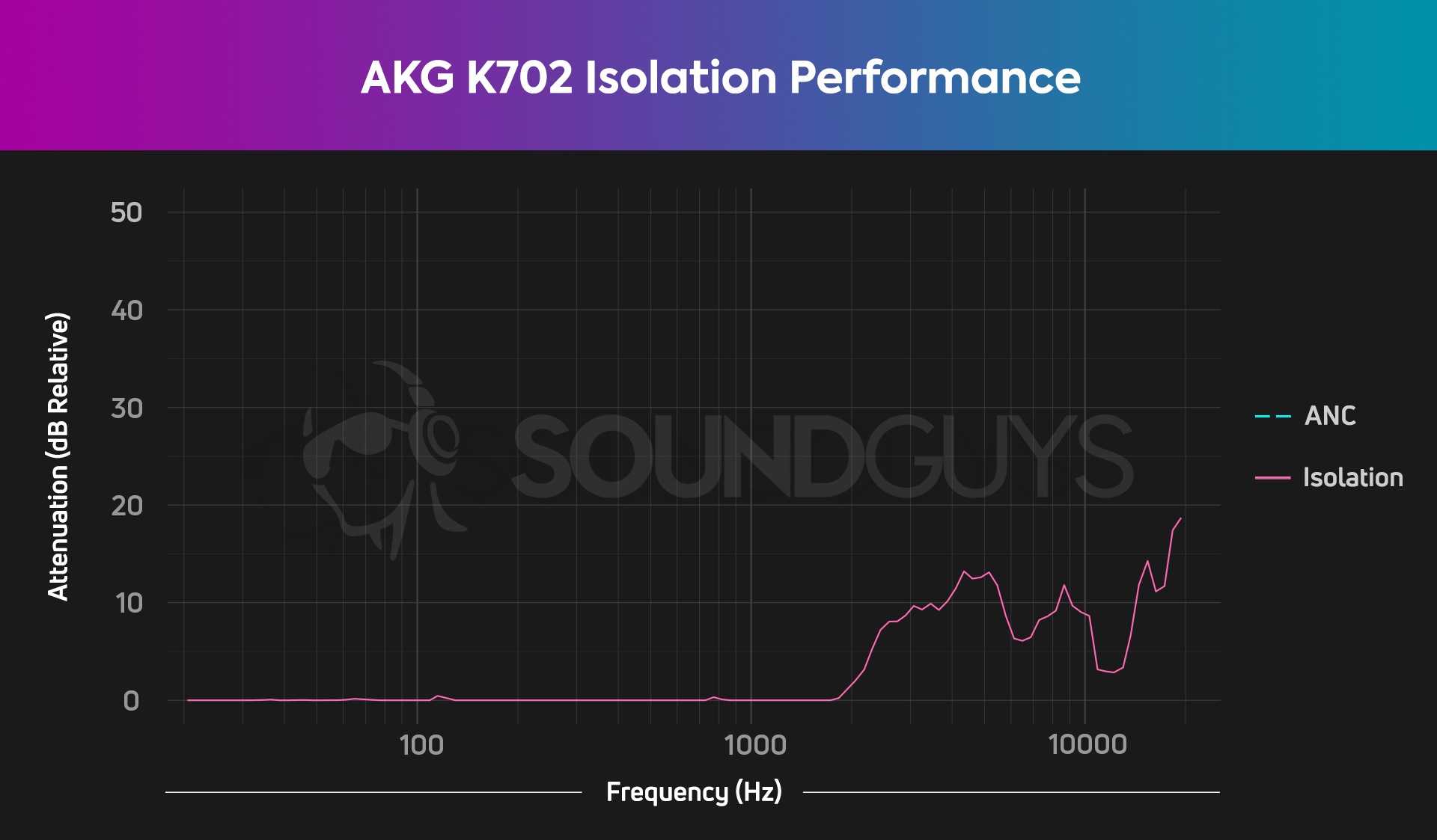
Well, it doesn’t really block noise. Don’t count that as a flaw, but rather as an inherent aspect of the open-back design. To see it as a bug would be like saying a sports car isn’t good because it won’t haul a trailer. You pick the right tool for the task: open-back designs are for quiet settings. Used in the wrong place, perhaps in an office, your coworkers will hear your music and you will still hear them. The isolation isn’t a problem while mixing or mastering music, because the room should be quiet anyhow.
Passive isolation requires sound dampening materials, but with open grills, you don’t get much of that on the AKG K702. Attenuating nothing below 2000Hz means doors down the hall slamming, television, chatter, your A/C unit, and more will all reach your ears. This prompts most of us instinctively to turn up the volume. For your hearing’s sake, I urge you to resist, switch to closed-back headphones for those times, or find a quieter room.
How does the AKG K702 sound?
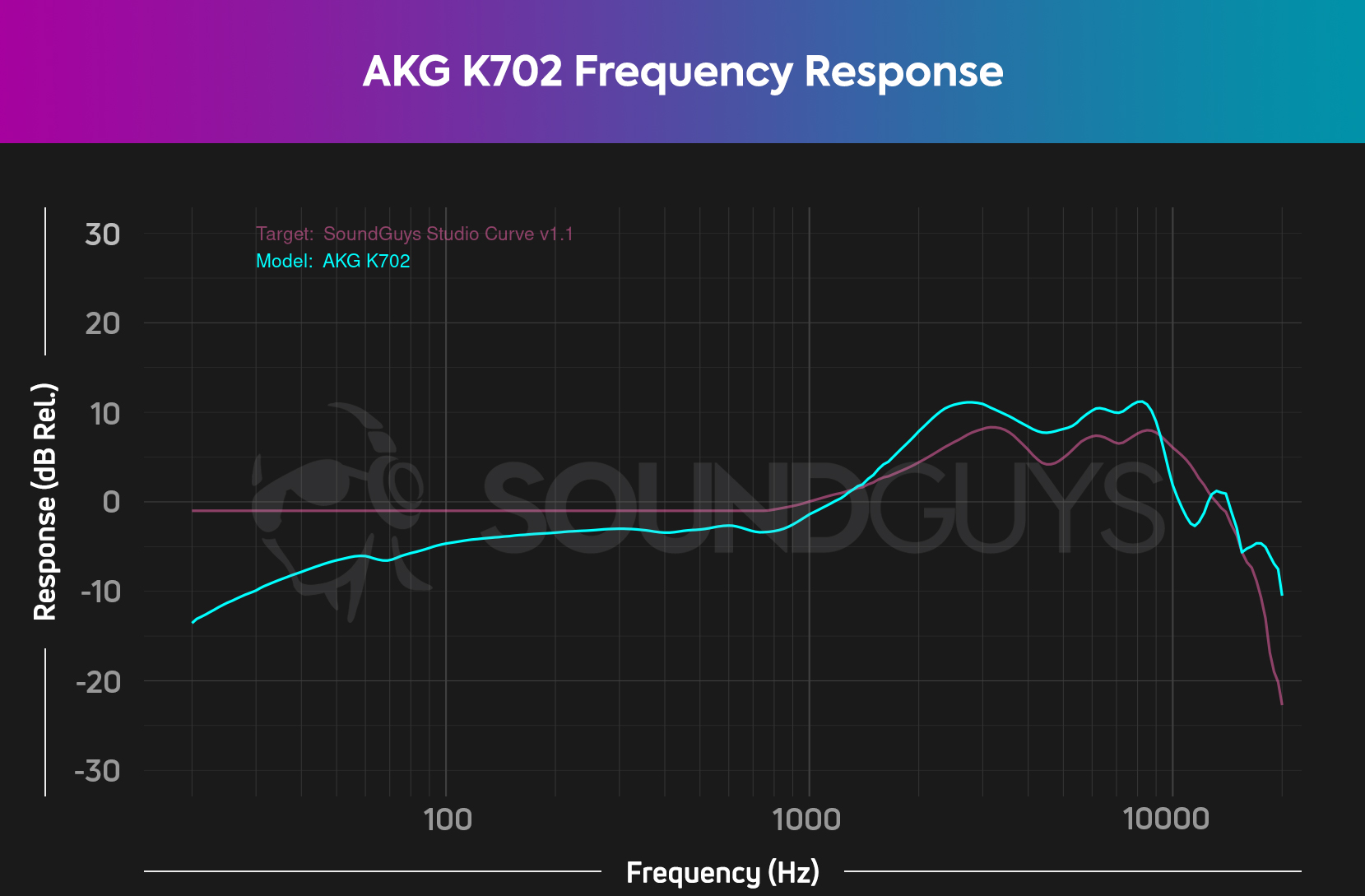
The AKG K702 sounds good. All is not totally perfect, however, like many open-back headphones, and reference headphones more broadly, the bass frequencies decrease in volume more than most of us would like in our ideal curve. You may find yourself overcompensating by upping the fader while mixing those bassy instruments.
Because deviations of 3dB or less in a frequency response chart are scarcely audible, the exaggerated highs above 1-9kHz do not pose much of an issue. Largely these follow our target studio curve well, if imperfectly. More obvious to your ears will be the significant under-emphasis below 100Hz. You will still hear some low-end, but in convoluted mixes, it’ll get lost beneath other louder instruments more easily.
Highs, mids, lows
I like to test reference headphones by listening to familiar songs to see if anything is missing or newly revealed. In the song Cherry-coloured Funk by Cocteau Twins, I immediately notice the extremely pleasant reproduction of the treble in Elizabeth Fraser’s soprano. The treble is too loud compared to lower frequencies, but it sounds nice in relation to all of the trebly instruments like the tambourine, vocals, and high guitar notes. None of these seem exaggerated.

When Fraser’s secondary vocals pan hard left while the main vocal line continues closer to the center of the stereo field, the parts sound distinct. In contrast, on some other headphones and speakers these parts can sound panned closer together. The heavily affected rhythm guitar plays at a good volume and is panned left, except at the chorus when it trades off with a right panned guitar. Basically, the AKG K702 reveals spatial positioning extremely well, with greater distance perceived by your brain between left and right, which is something open-back headphones tend to excel at. This can make it easier to find details in your audio.
Of course, the bass guitar, low toms and kick are audible in the song, however, they’re somewhat subdued. This is tolerable for a track that’s decidedly treble-focused, though not ideal. Keep in mind that the bass isn’t egregiously quiet, and the decrease in output is most dramatic in low frequencies at the edge of our hearing.
For example, Cavern by Liquid Liquid centers around a prominent bass line, and it still sounds good, with some oomph. This may be a positive effect of the track’s instrumentation being pretty sparse, so the bass line doesn’t have to compete with other frequencies for your ears’ attention. The low-end reproduction does sound like some information is missing. This is why you may want to consider equalizing the AKG K702.
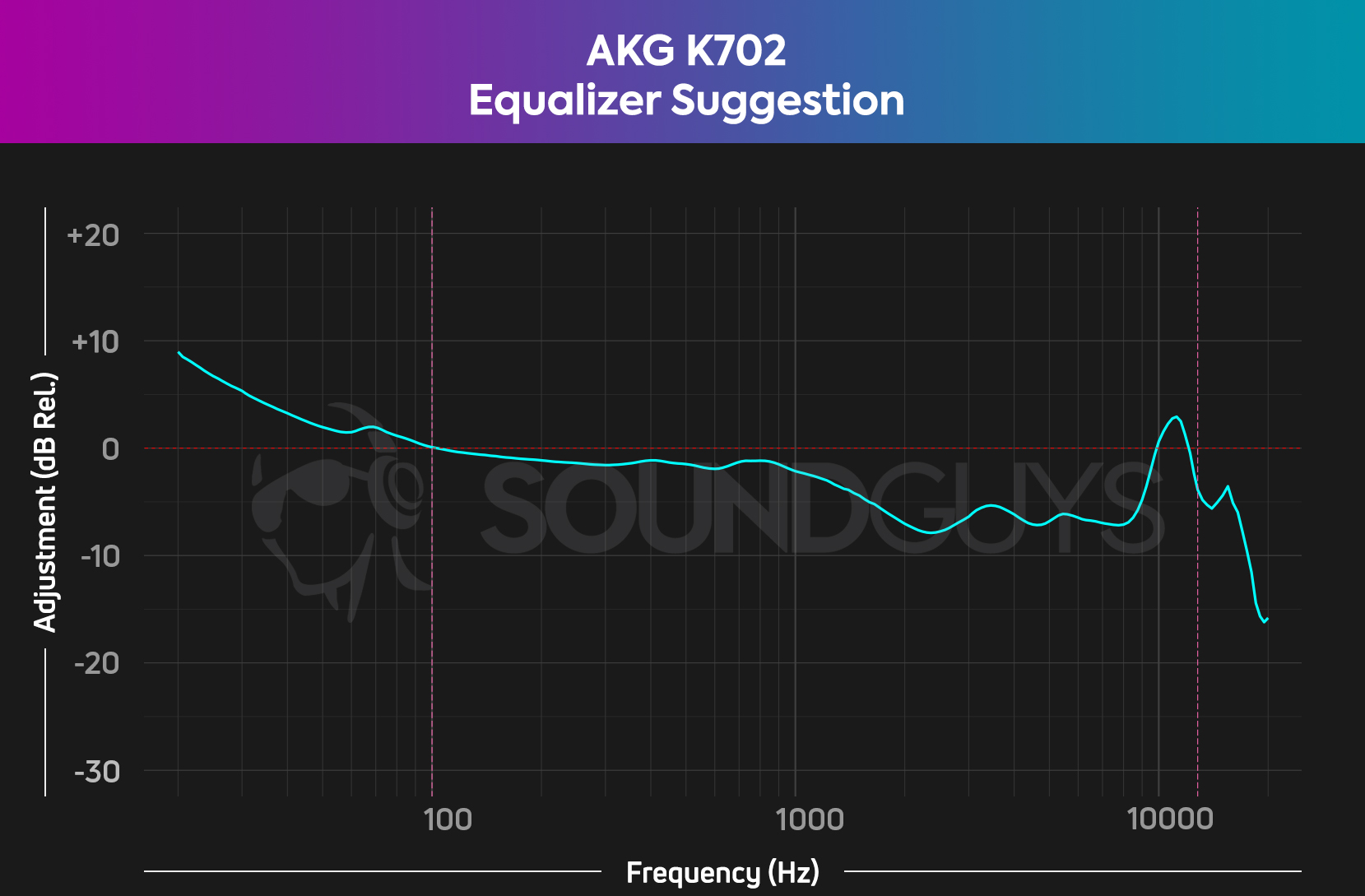
Good news, you can remedy the quiet low-end on the AKG K702. Not only will this make it more accurate for mixing purposes, but equalizing your K702 will result in those quiet bass frequencies sounding more audible when listening for pleasure. Given that the AKG headphones will pretty much stay in your home or studio, this is a great candidate for EQ. Simply put, set the EQ once in your setup and leave it alone.
Turn down the highs and mids, and turn up the bass in order to more closely approximate our ideal for studio headphones. You can follow our suggestion as a starting point, or use our Wavelet EQ file for the K702.
Should you buy the AKG K702?

Whether you ought to pick up the AKG K702 depends quite a bit on how much you can get it for. For whatever reason, the K702 fluctuates by up to $200 USD in price, and it’s worth it at its cheapest. At its most expensive price, the K702 is still worth considering, but the competition is tougher. Considerations include how quiet is the space where you’d be wearing the K702.
Think about whether your application requires minimal sound leakage, say recording a podcast or a vocal track. If it does, you probably need a closed-back headset instead. The upshot of the K702 is that it’s comfortable, with good weight distribution, and the grills supply air ventilation. As a purpose-built tool, it works like a charm for critical listening, such as audio editing, but you likely don’t want it as your sole headset. The bass under-emphasis is still a constraint necessitating some EQ to fully realize the K702 potential.
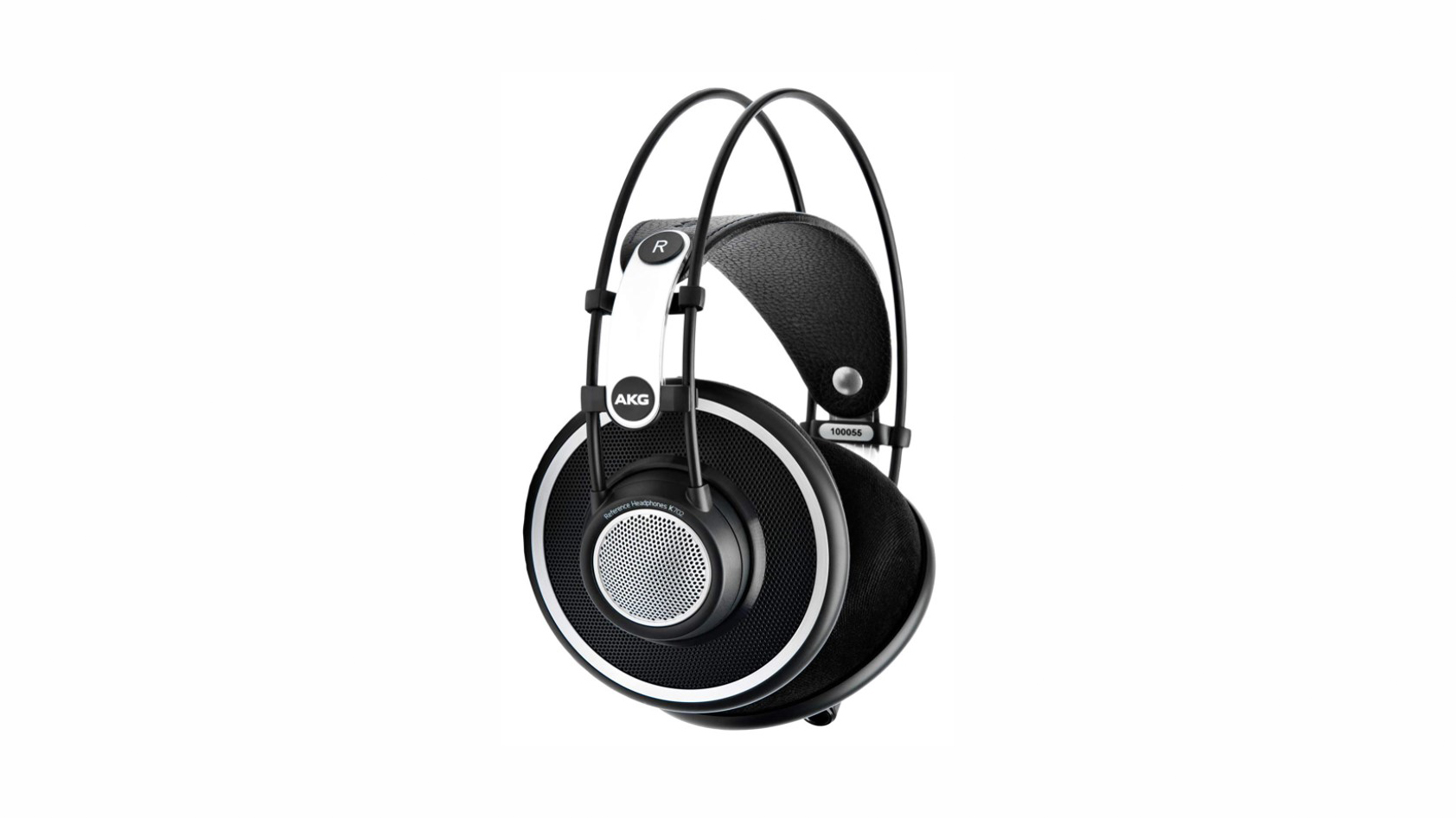
In its favor, you get a removable cable and a good selection of aftermarket options for ear pads. The stiff leather headband in time should mold to your head, but fresh from the box it’s not amazing. For folks with glasses, the K702 is an easy-wearing companion at your desk.
What should you get instead of the AKG K702?
Not quite as light, but otherwise sporting a better low-end response, is the Beyerdynamic DT 900 PRO X. This open-back headset has a more luxurious set of velour ear pads too. Depending on the retailer it can go for less or more money than the AKG K702.
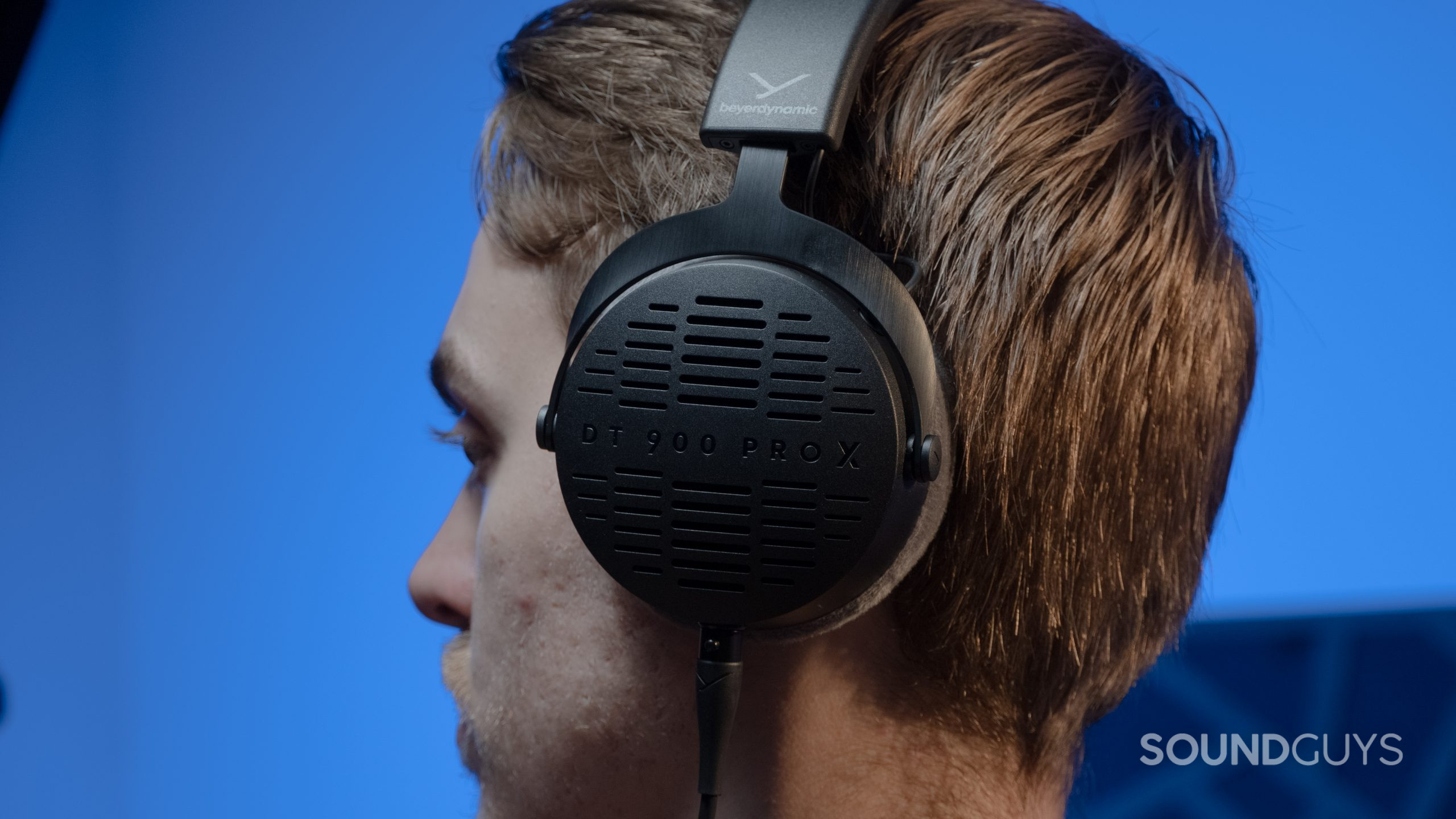
Another popular choice is the Drop x Sennheiser HD 6xx. This set of open-back headphones clamps more firmly, and typically sells for less money than the K702. Like the K702, the Sennheiser set has a large selection of third-party ear pads available to tweak the experience. While feeling a little more plasticky, the build has less flex than the K702, but nonetheless indicates sturdiness.
If you are open to planar headphones, the HiFiMan Sundara is a great pick with a wonderful sounding frequency response. For its chunky weight, the Sundara distributes its mass well, although, it’s not as feather-light as the AKG K702. The price is surprisingly not bad either.
What are good closed-back headphone alternatives to the K702?
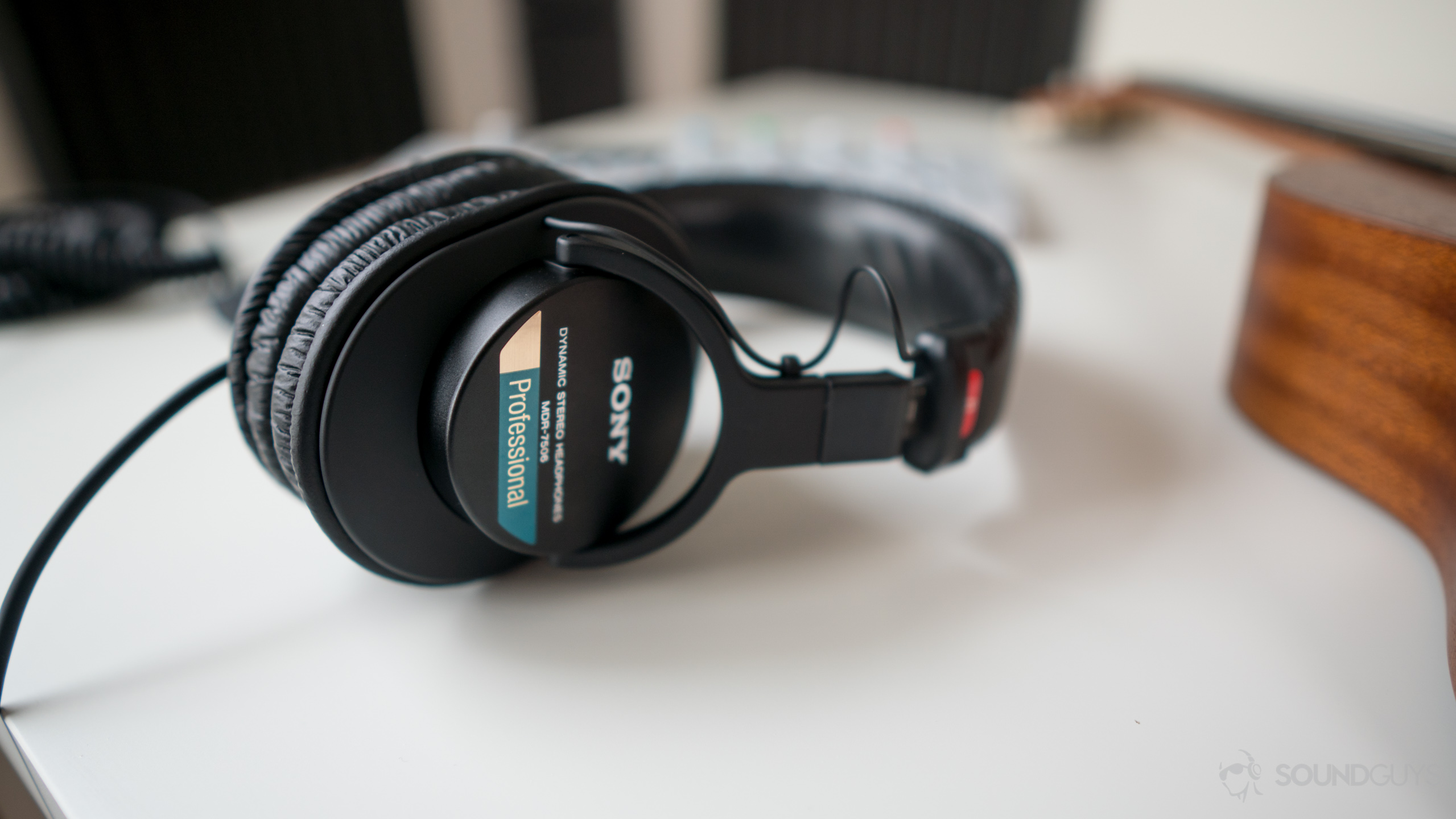
Open-back headphones are a bit of a special breed, and while every producer and enthusiast ought to have one set, it shouldn’t be their only set of headphones. Sometimes the best alternative to a set of AKG headphones is a different set of AKG headphones, like the AKG K371. It possesses a slimmer profile, more bass for a consumer-friendly frequency response, and the ear cups can articulate.
For the folks focused on a pair for mixing, you can’t go wrong with the industry standard. Try the Sony MDR-7506. It may not be the most comfortable, but its durable, utilitarian build coupled with a budget price means the MDR-7506 satisfies most engineers. It folds up easily, a nice bonus that lends extra flexibility.
Lastly, the closed-back version of the Beyerdynamic DT 900 PRO X, the DT 700 PRO X retains the studio-style frequency response, with a little more low-end than the AKG K702. The metal housing means the headset doesn’t exactly count as lightweight, but it is comfortable.
Frequently asked questions about the AKG K702
Burn-in is a myth for drivers, however, materials mold over time to fit you better. Your fit might change over the years as you break in the materials, which can affect sound indirectly.
Besides color differences, both headsets look a lot alike with a similar fit and dimensions. The K701 has 50mm drivers, rather than the 45mm found in the AKG K702. Both have an open-back design. Unlike the AKG K702, the K701 does not have a removable cable. Interestingly, the K701 ships with a stand, which is handy if you don’t have one already. Otherwise, both headsets have exactly the same impedance and sensitivity, as well as the stated frequency range.
Mainly the difference between the K701 and K702 is related to voicing (frequency response). They sound a bit different, albeit both possess studio-style responses. Unless you demand the removable cable (in which case the K702 is the clear winner), you can’t go wrong with either headset. It’s worth trying them side by side, but basically, whichever is cheaper and available is probably the best choice.
Thank you for being part of our community. Read our Comment Policy before posting.